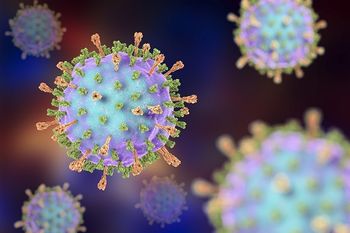
The CDC offers further insight into the investigation of a Zika virus infection in a family member of the first Zika-related death in the continental United States.

The CDC offers further insight into the investigation of a Zika virus infection in a family member of the first Zika-related death in the continental United States.

A naturally occurring compound in plums has been found to block the entry of the hepatitis C virus into cultured liver cells.

A new report from the National Center for Health Statistics has found that too many adults aged 65 and older are missing out on important vaccinations.

What does the latest news of Stanford Healthcare safety failures really tell us?

New research suggests that a vaccine designed to protect against meningitis may also protect against gonorrhea infections.

Senate Majority Leader Mitch McConnell and his Republican colleagues have written and released a new version of the American Health Care Act (AHCA) that addresses many outstanding concerns, but will it be enough?

Although advances in HIV treatment mean many people with the condition are able to achieve viral suppression and display no outward signs of illness, kidney disease is still a fairly common occurrence in those who are infected.

A new study is the first to examine the epidemiology of multidrug-resistant tuberculosis in children in the United States.

The National Institutes of Health (NIH) is looking to determine whether Zika virus infection poses an additional risk in women whose pregnancies are already complicated by HIV.

Researchers from the University of Iowa have found that surgical site infections are seasonal.

With as many as 30 million new cases annually, resulting in more than 6 million deaths worldwide, new initiatives are focusing on an age-old problem—sepsis, and its related complications.

For the most challenging of microbial threats, one microbiologist is trying an old tactic in a new era.

Researchers from EcoHealth Alliance have developed a predictive “map” that identifies the zoonotic host species that are “likely to harbor the next human virus” and documents the regions of the world where they can be found.

Cases of antibiotic-resistant gonorrhea are on the rise, and the bacteria may soon become untreatable if new antibiotics and diagnostic tools are not developed.

Researchers from the University of Pittsburgh find a way to successfully treat a patient with ceftazidime-avibactam-resistant Klebsiella pneumoniae.

A group of researchers examine the feasibility of a low-resource behavioral intervention created to promote retention in HIV care.

In a new study from Amsterdam, researchers have found that patients who were recently treated with azithromycin showed increased resistance to treatment for Neisseria gonorrhoeae.

A Canadian researcher recently built horsepox from mail-ordered DNA and with it comes an extra delivery of dual-use scrutiny.

Penn researchers find that cases of recurrent C. difficile infections are rapidly increasing, underscoring the need for new treatment options, such as fecal microbiota transplants.

A look into how health information exchange interventions are beneficial in HIV care; the discovery of 3 mutations that could help the bird flu spread among humans; news about a new patch formulation for the flu vaccine; progress towards an HIV vaccine; and information on an interactive map that visualizes the US HIV epidemic, make up the Top 5 articles for this week.

Brenda Fitzgerald, MD has been named the 17th Director of the Centers for Disease Control and Prevention (CDC) and Administrator of the Agency for Toxic Substances and Disease Registry (ATSDR).

In a new study conducted in a healthcare system in the Bronx, a team of healthcare providers has created a new program to cut hospital readmission rates in patients receiving outpatient IV antibiotic treatment.

The Hawaii Department of Health continues to investigate the growing number of mumps infections in the state.

What's the best recipe for MRSA screening and isolation practices?

The World Health Organization has officially declared that the recent Ebola outbreak in the Democratic Republic of Congo is over.

Following a request from the US Food and Drug Administration (FDA), Endo Pharmaceuticals has pulled its opioid agonist Opana ER (oxymorphone hydrochloride extended release).

The number of RSV-infected adults in an African study who also had HIV was quite high, with the burden of HIV disproportionately in the young.

New HPV vaccine recommendations from the World Health Organization, information on a new once-daily treatment for HIV, the potential underestimation of tick-borne diseases in the Western United States, norovirus outbreaks in California schools, and how reservoirs of latent HIV hinder the quest for a cure, make up the Top 5 articles for the month of June 2017.

A recent report from the Centers for Disease Control and Prevention takes a closer look at a case of late-onset neonatal Streptococcus agalactiae (GBS) infection and its association with maternal consumption of placenta capsules.

As Colorado reports its first human West Nile virus case of the season and California reports its third, health officials around the country are emphasizing the importance of mosquito control and prevention.